The Herald Examiner Building on Broadway in Downtown Los Angeles had always been somewhat of a mystery to me.
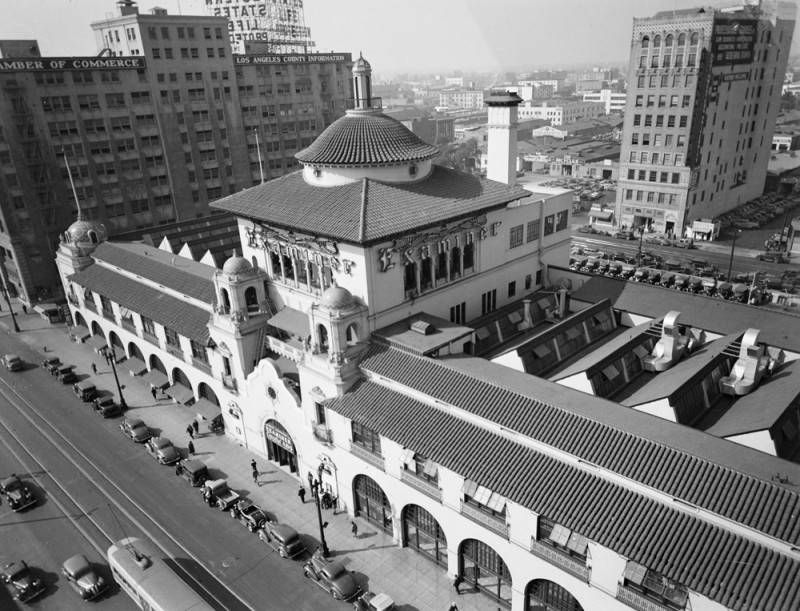
circa 1937 (Photo: Works Progress Administration Photo Collection, LAPL)
After all, the Los Angeles Herald Examiner ceased its publishing operations 33 years ago, in November 1989.
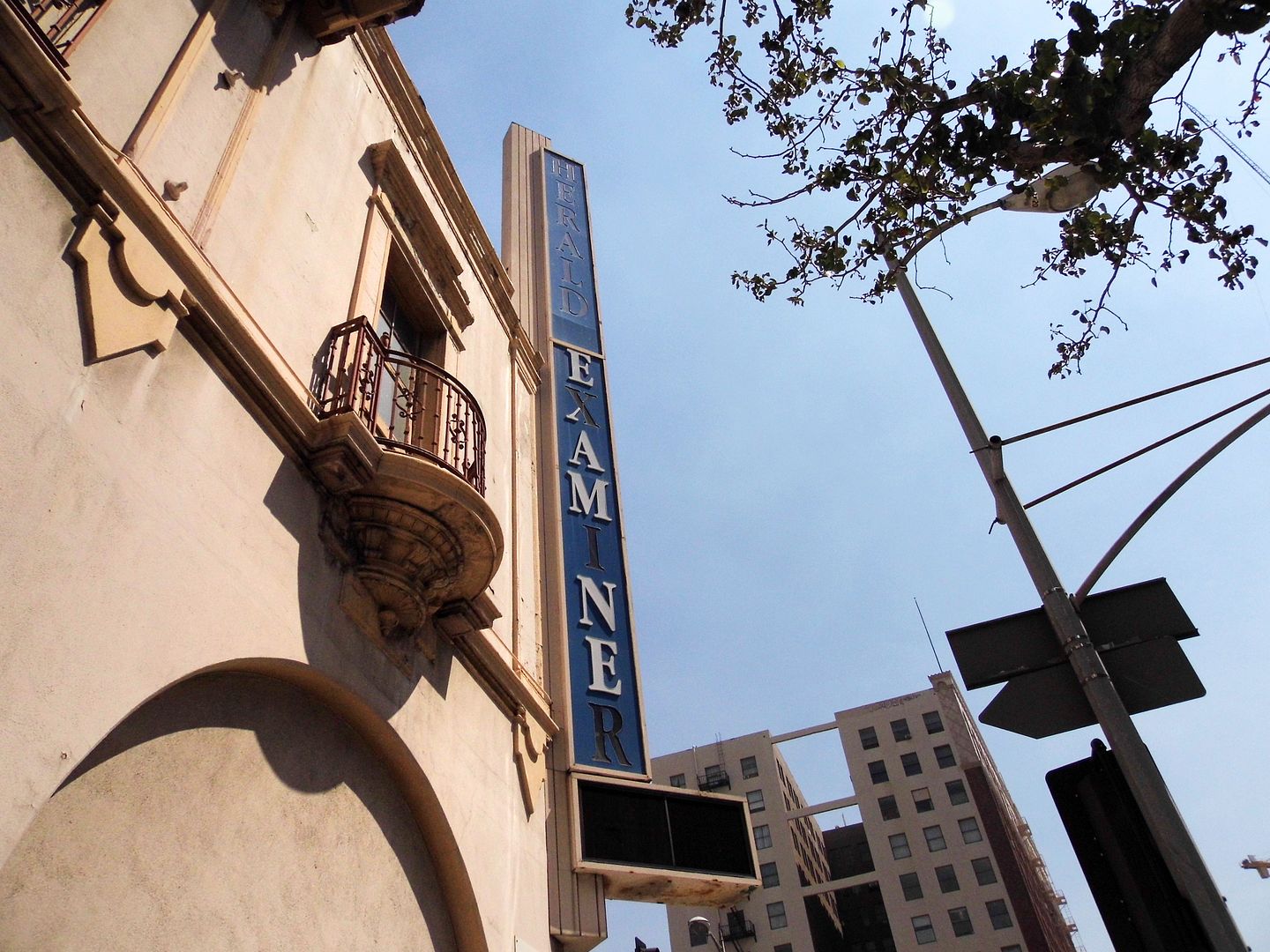
circa 2016
And ever since, the building would still bear its name—but be open only as a filming location (for movies like The Prestige and The Usual Suspects and TV shows like Melrose Place).
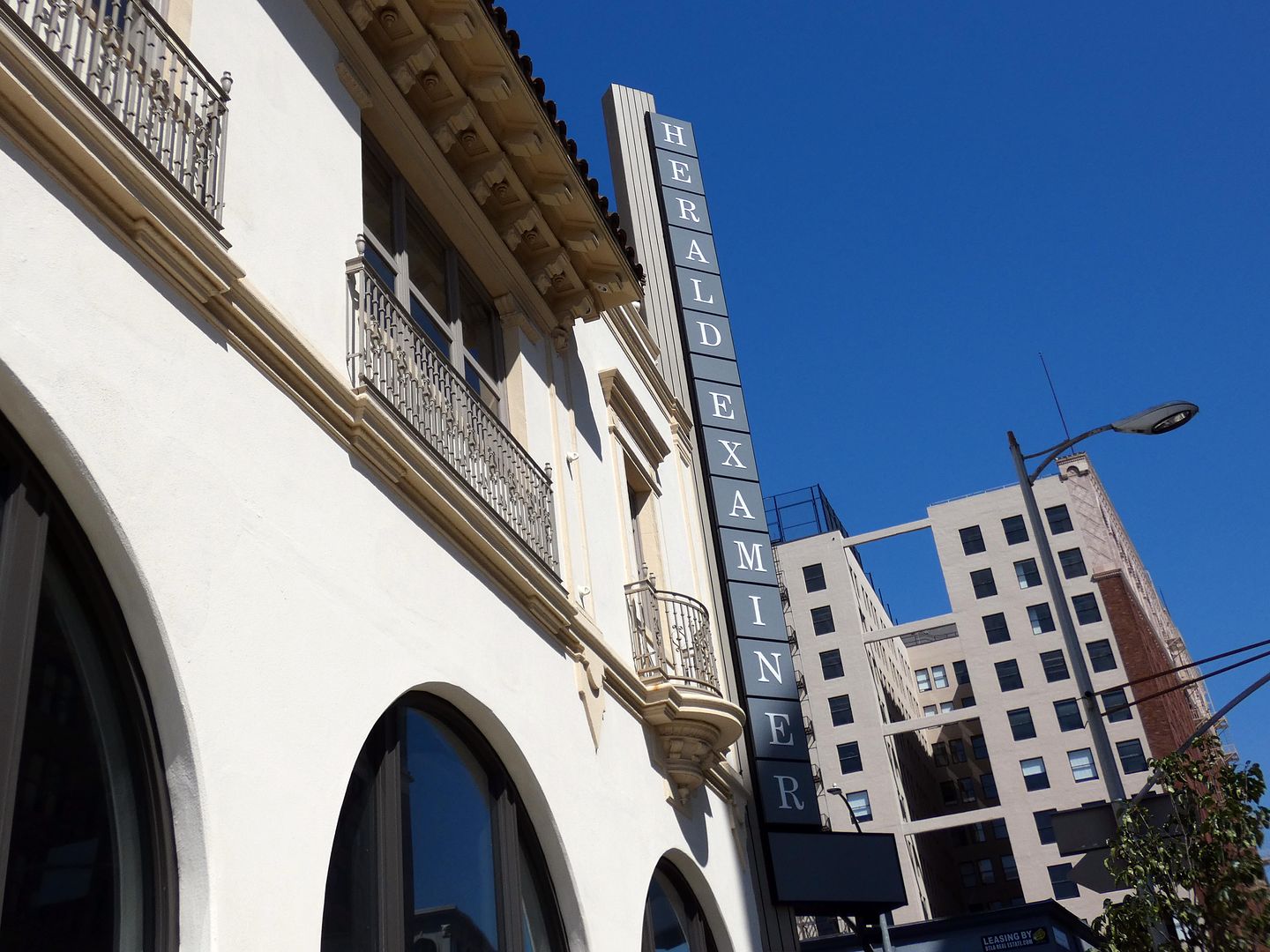
circa 2022
Now and then, I'd skulk around hoping to find a crew that would let me in, to no avail.
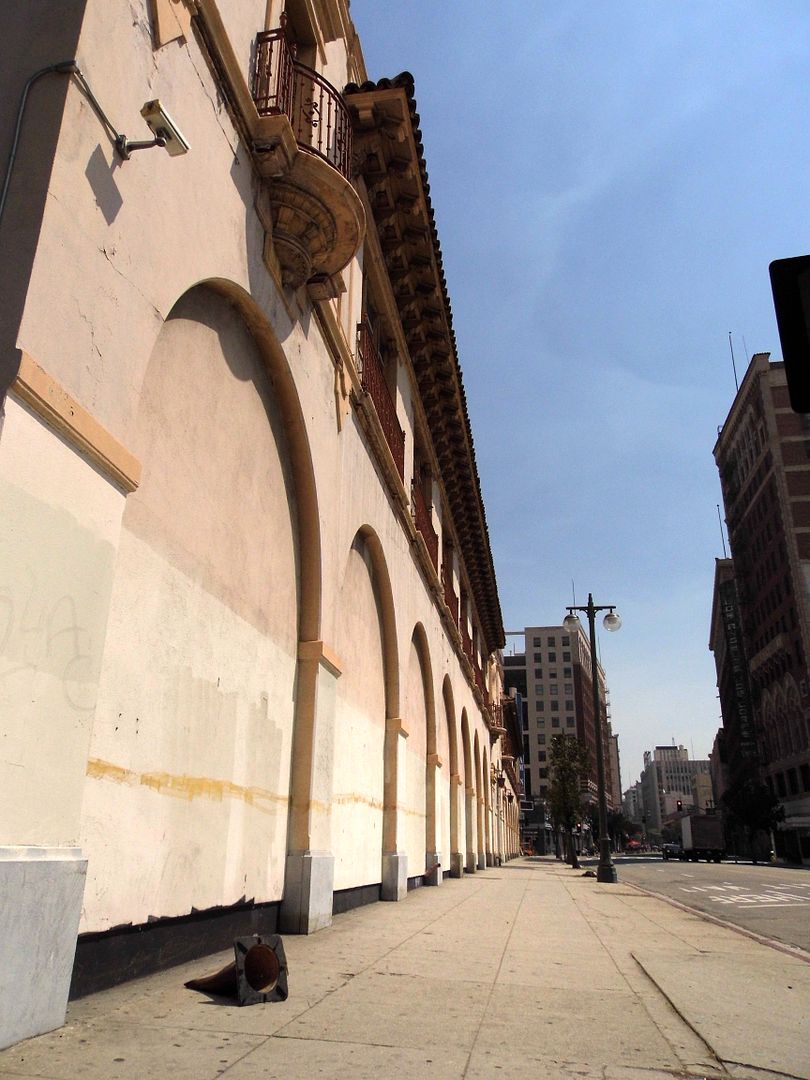
circa 2016
Even the sidewalk-facing windows had been sealed off with concrete (since protesters broke the glass in labor disputes in the late 1960s/'70s).
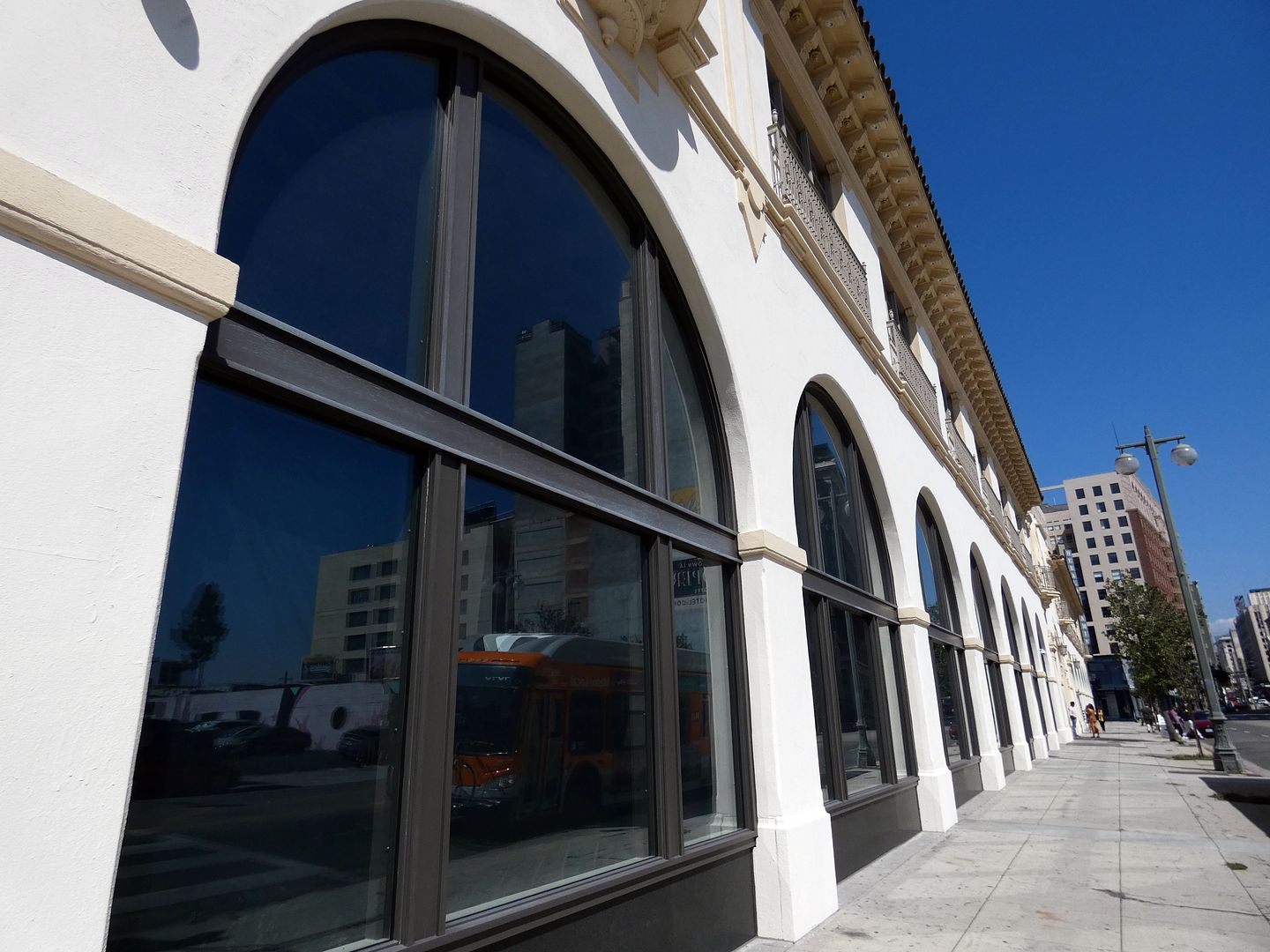
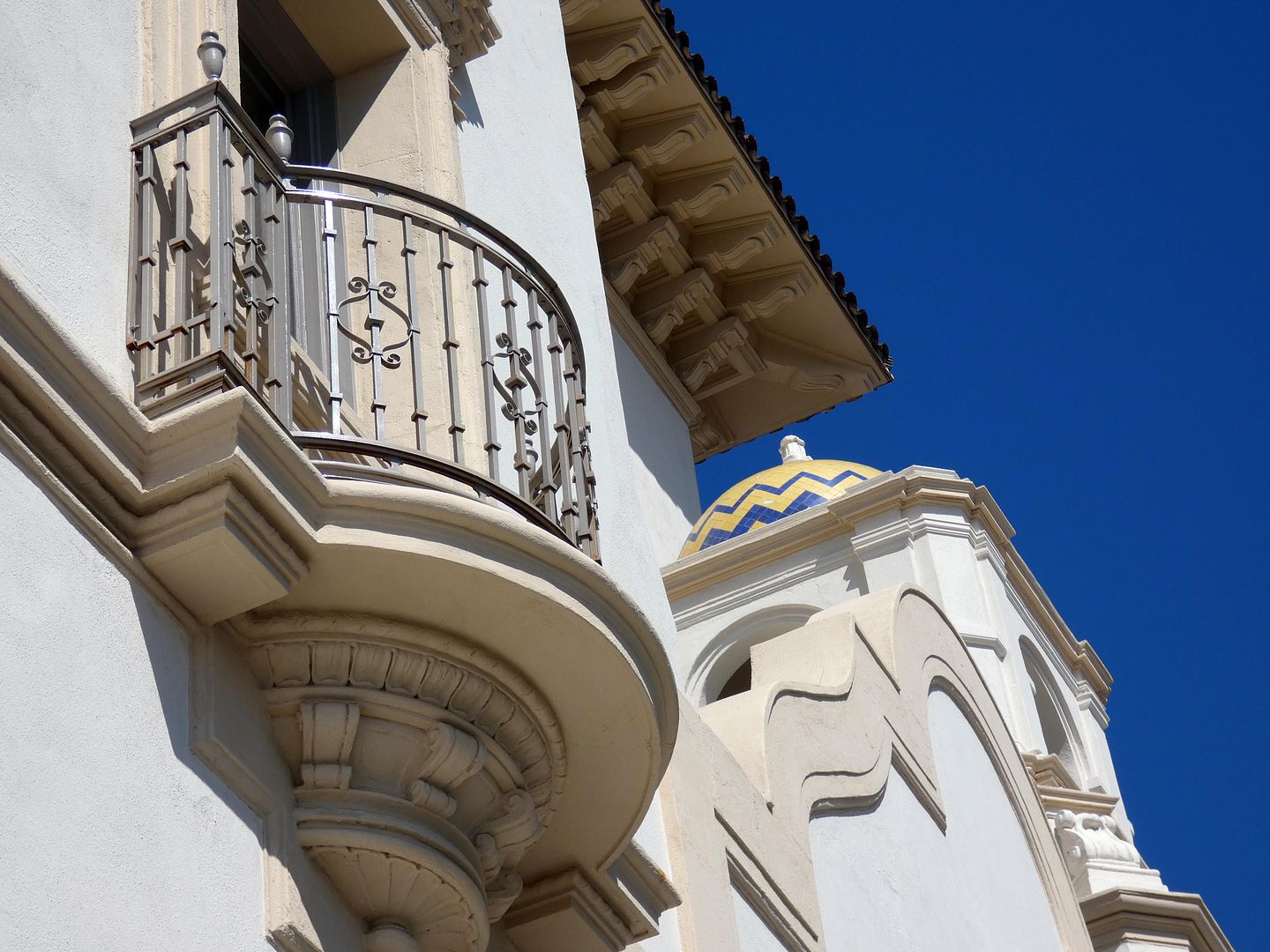
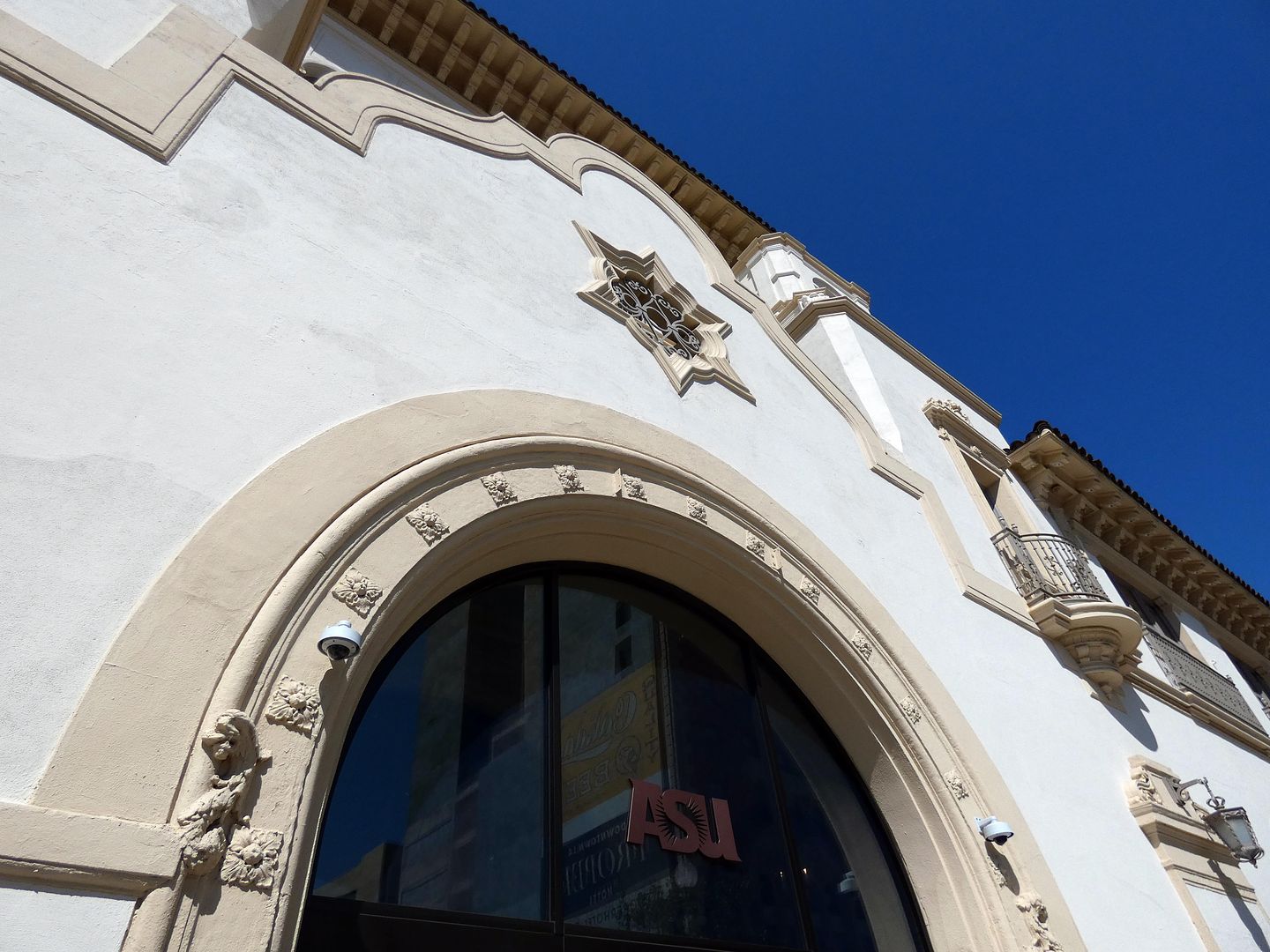 circa 2022
circa 2022
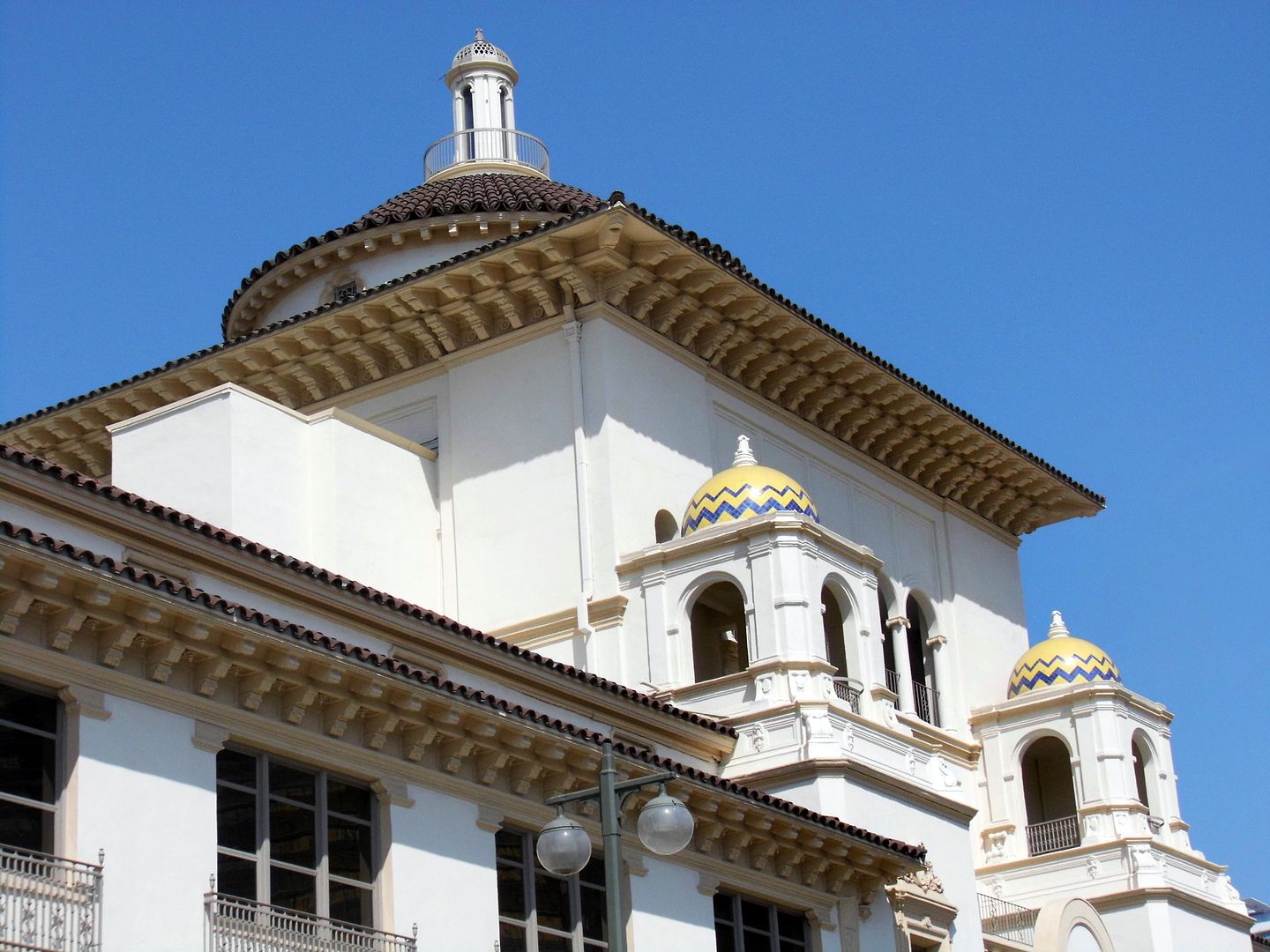
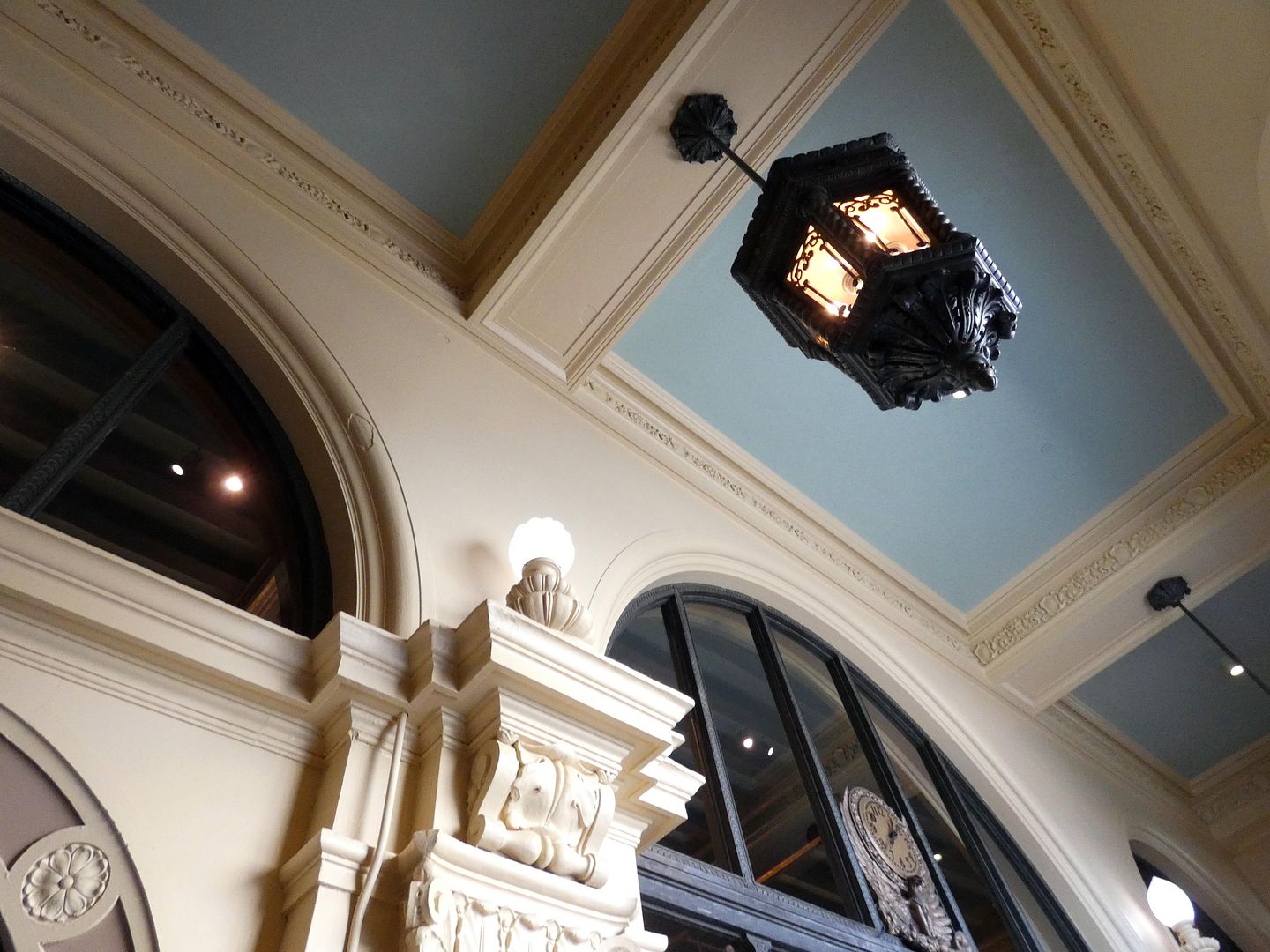 all following photos from 2022
all following photos from 2022
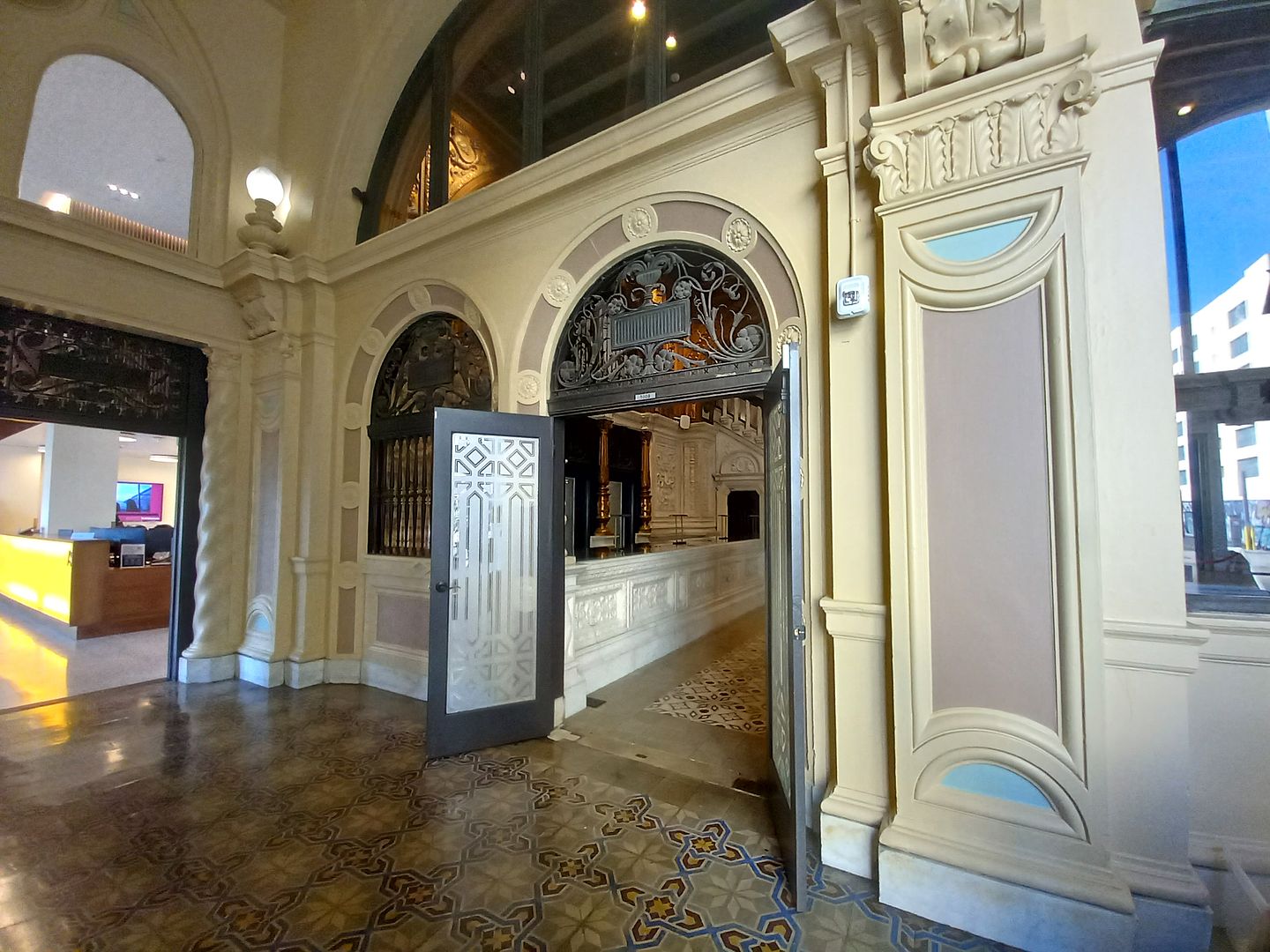

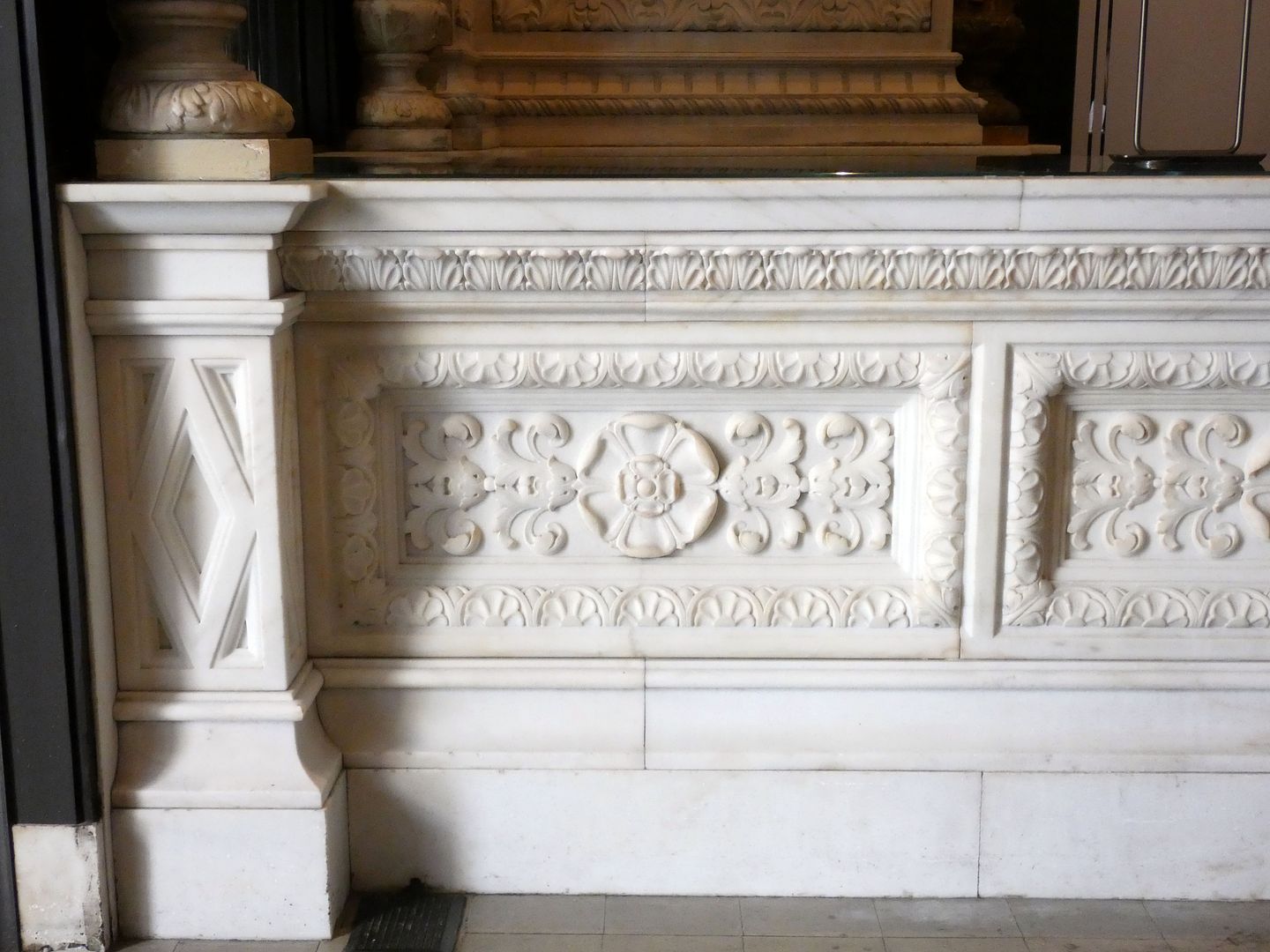

circa 2022
The construction fencing I subsequently encountered, which blocked off all access to the Mission Revival-style building (originally completed in 1914), was part of the revitalization effort to prepare it for its new use...

circa 2022
...as the 100,000-square-foot LA campus for Arizona State University, which is expanding its footprint in California, its #1 source for out-of-state students.
 circa 2022
circa 2022Since it opened in September 2021, ASU's "California Center" has been offering both undergraduate and graduate programs—including those in journalism—out of the Herald Examiner building.

circa 2020
It's a fitting setting, as publishing magnate William Randolph Hearst had commissioned architect Julia Morgan (also later his partner on Hearst Castle) to design it for his Los Angeles Examiner newspaper, which he'd founded in 1903.
 all following photos from 2022
all following photos from 2022 Although shooting ceased in 2015, probably the most popular area for location scouts and film crews was the opulent, historic lobby (marked by the original Hearst clock)...

...which has been restored to its original grandeur and preserved.

According to the Los Angeles Conservancy, the Hearst Corporation objected to it being listed on the National Register of Historic Places in the early 1990s (although it was deemed eligible) and had actually planned to demolish it until about 2009.

The entire building was designated a Los Angeles Historic Cultural Monument in 1977—but the lobby is the only major part of the interior that's been preserved in its transformation into an educational campus, as interiors generally aren't protected by landmark status.


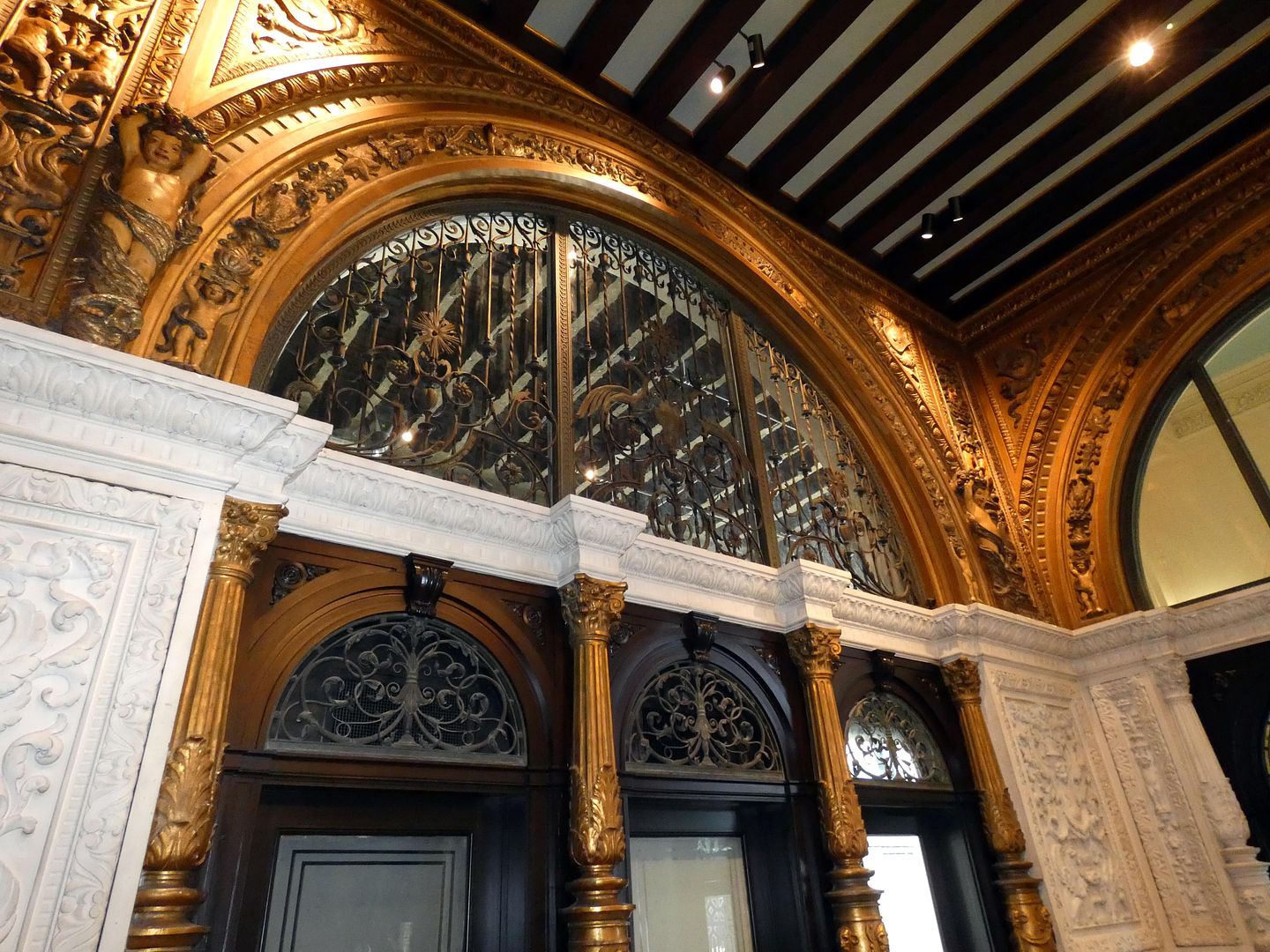
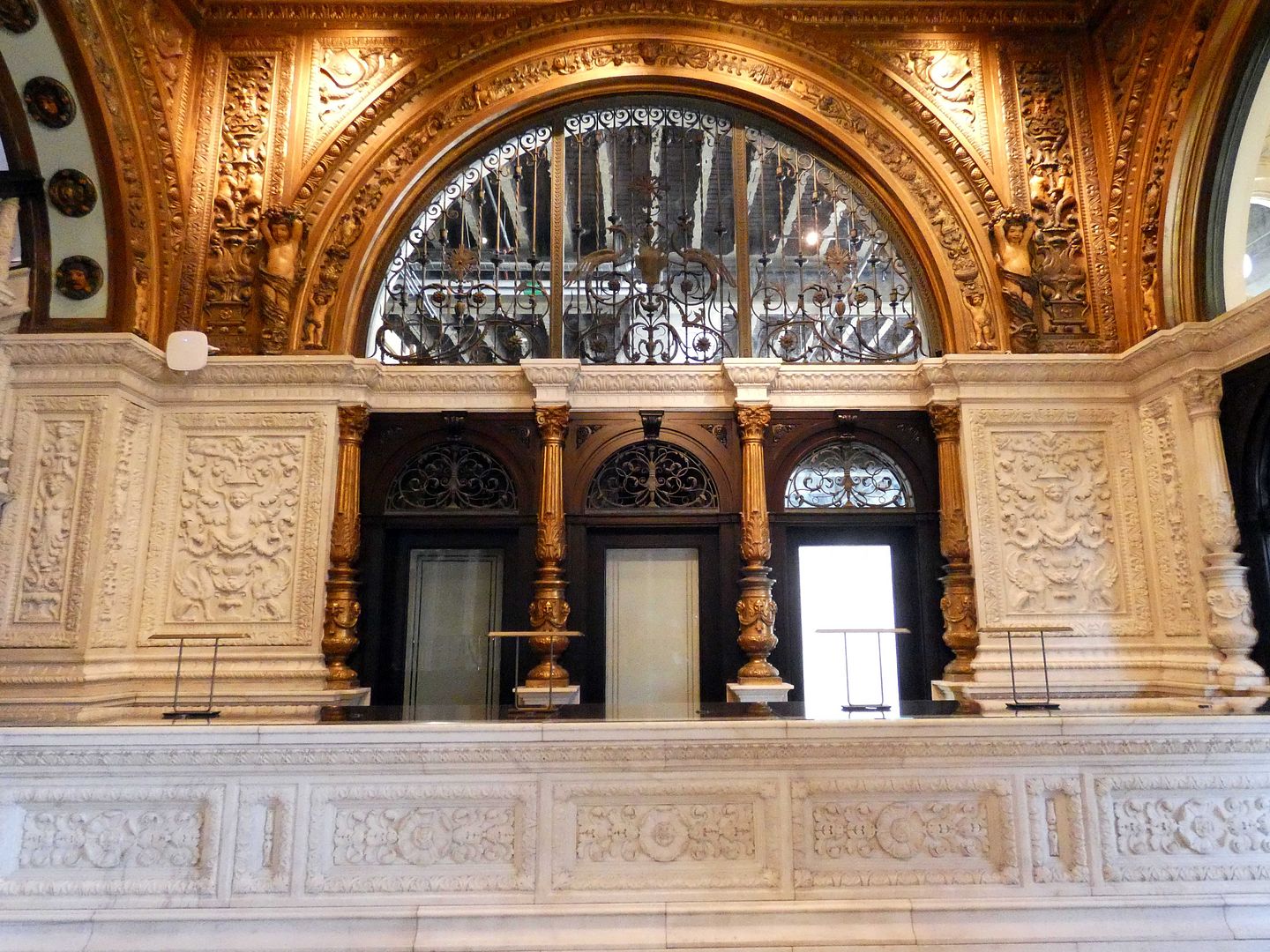

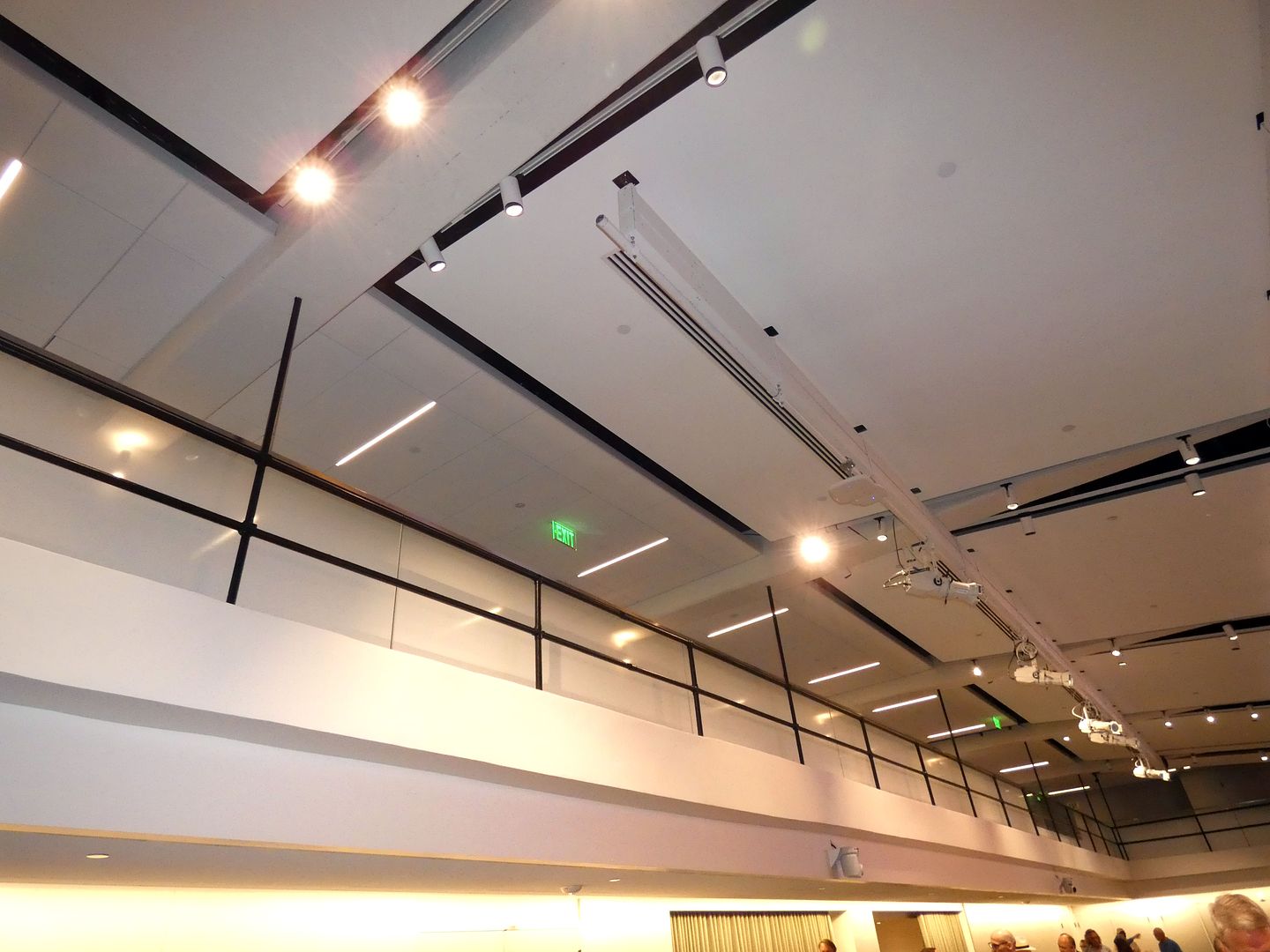
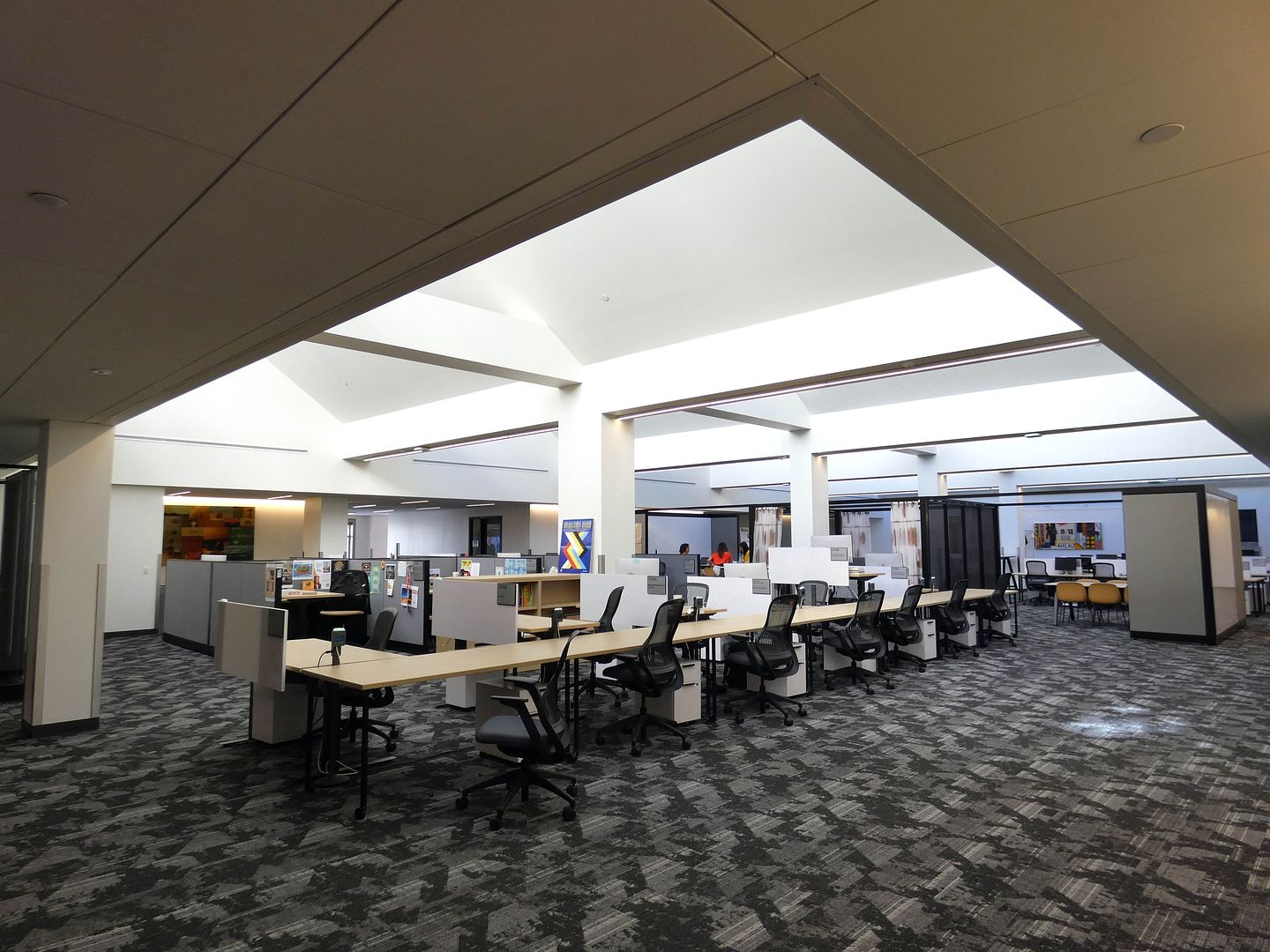
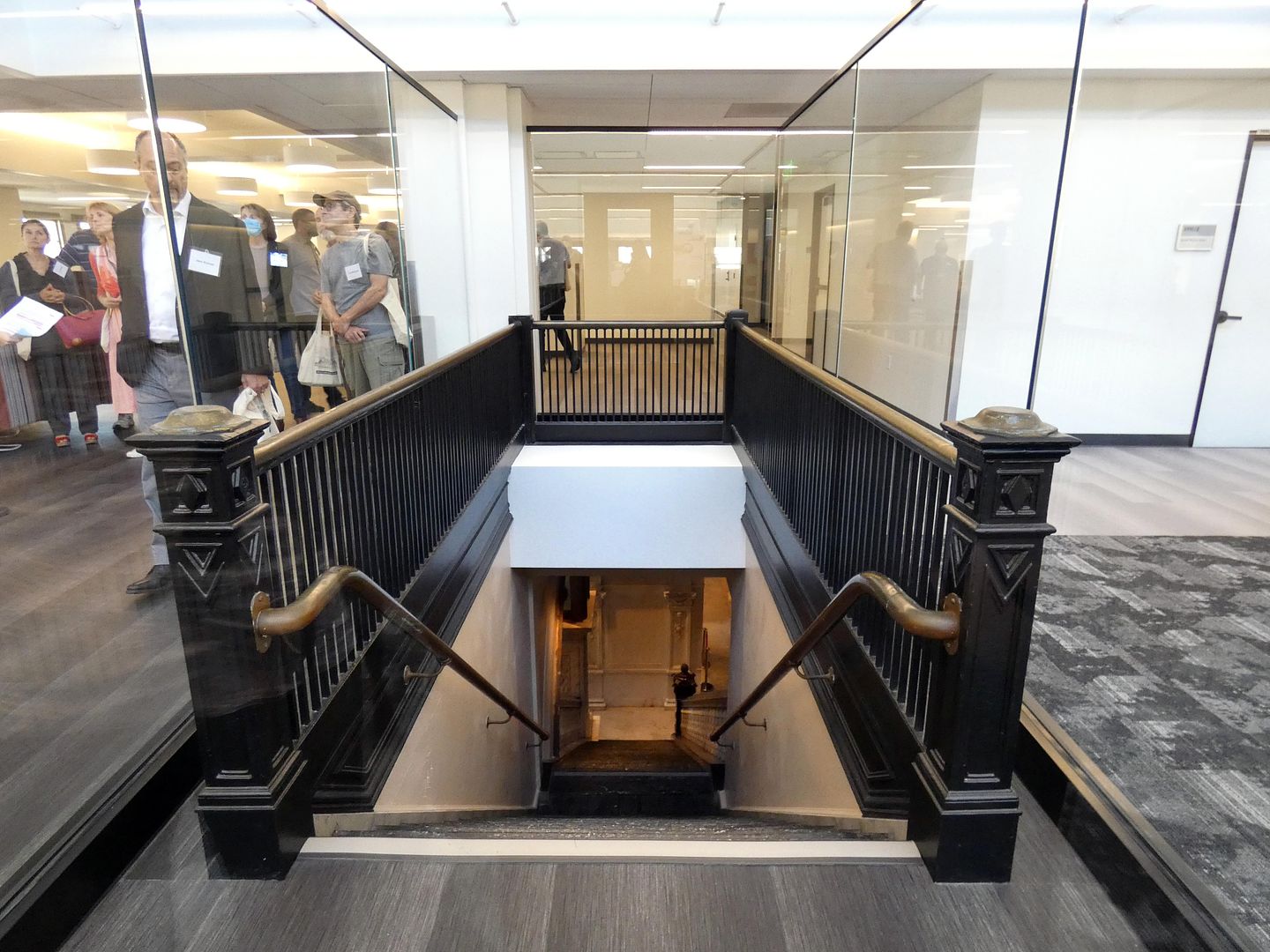
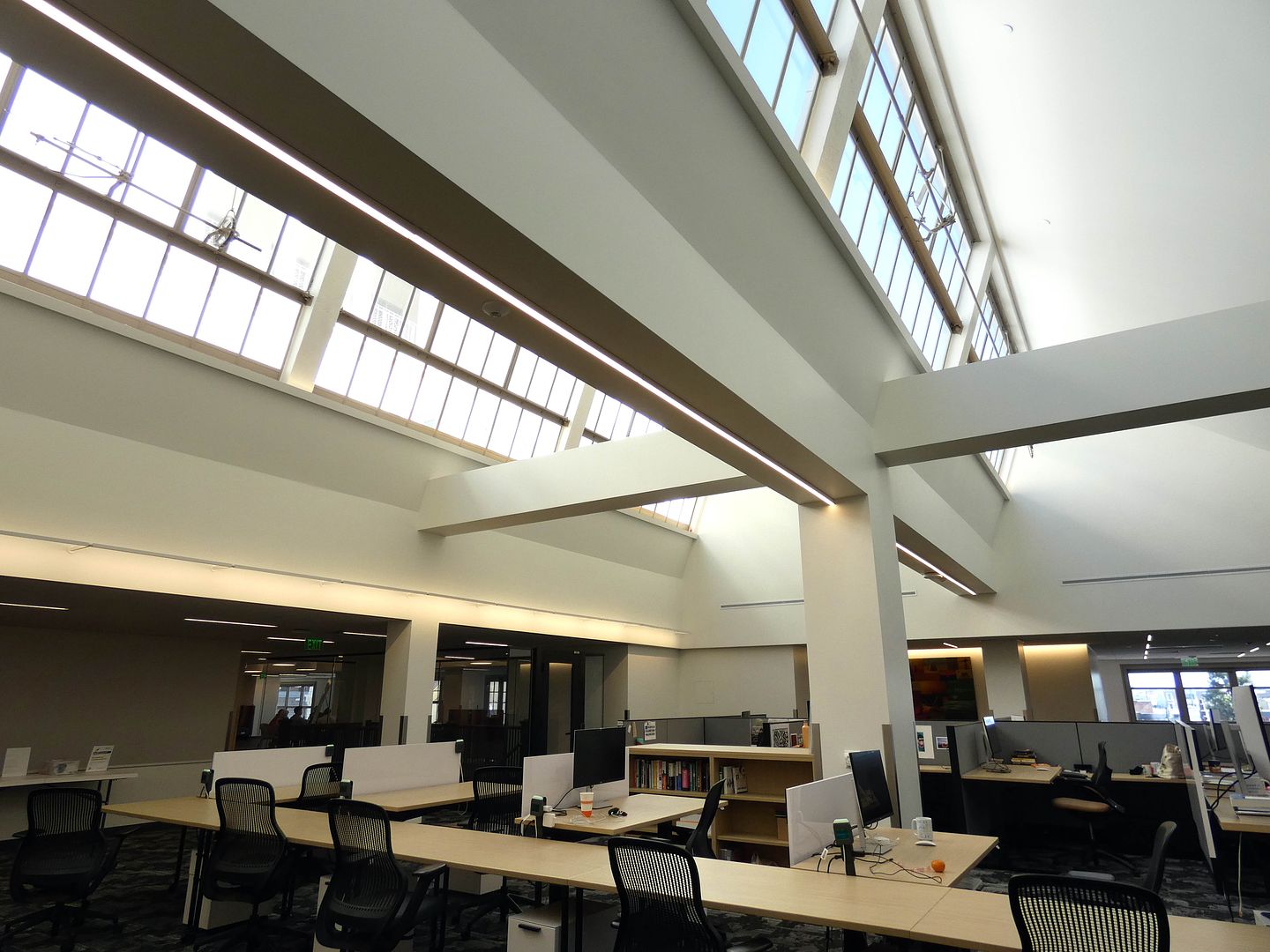

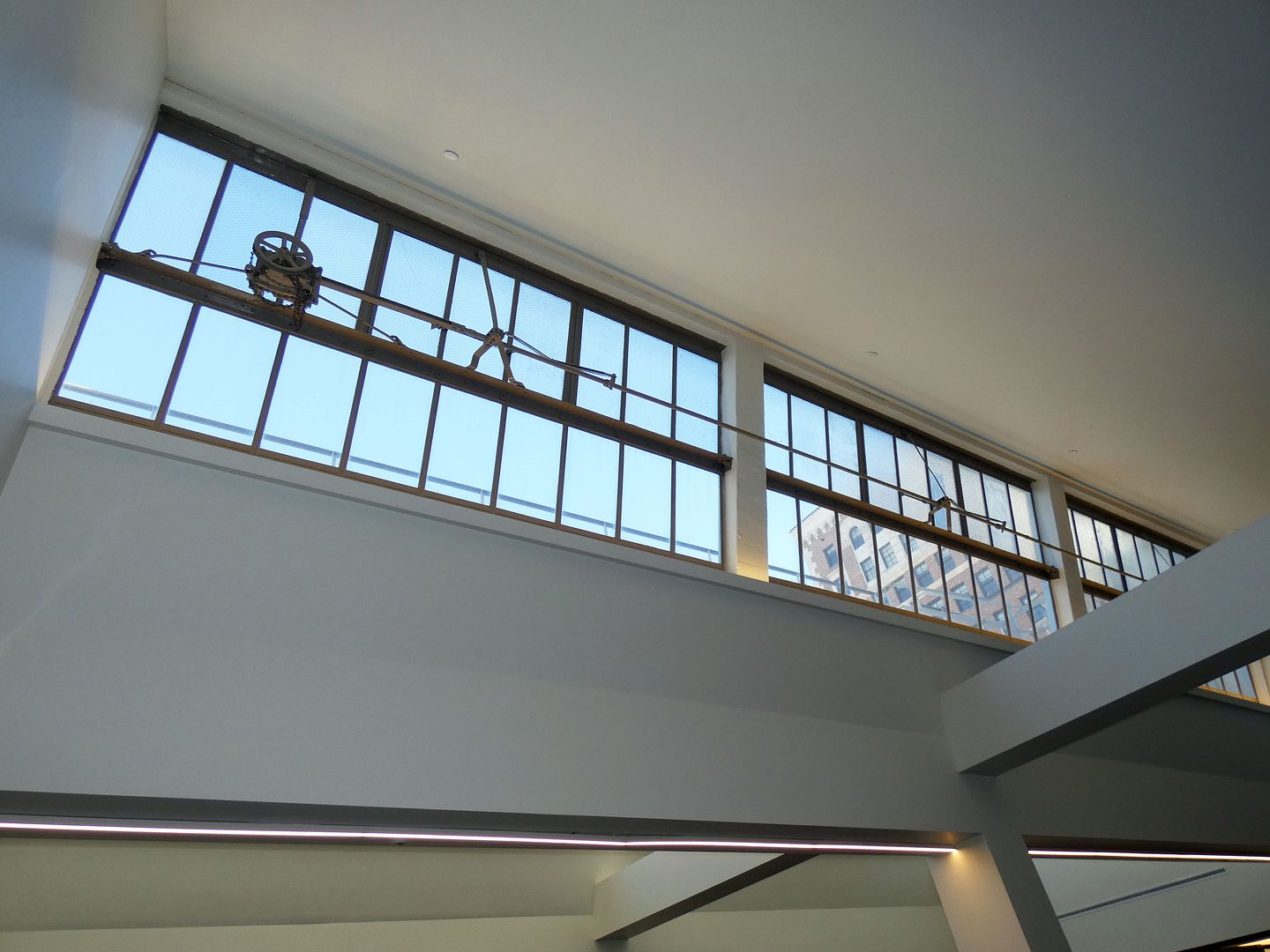

The palatial lobby still features carved pilasters and marble, hand-painted floor tiles, and all the ornate details you'd expect to live up to Hearst's edict: "That this home should be the best equipped and largest building in the world devoted exclusively to the production of a newspaper."

It's no wonder that the lobby has stood in for a hotel, church, city hall, church, bank, theatre, and more in Hollywood productions. (In the movie Insidious, it even served as the devil's lair.)

Hearst's other instructions were that the new Los Angeles Examiner (later, the Herald Examiner) headquarters "...should typify architecturally the romance and history of Southern California, whose early life and traditions were derived from old Spain."

Amazingly, the public used to be able to enjoy this lobby in person—namely, by placing classified ads at the counter.

But Hearst didn't like interacting with the public much (or even his own staff), so he had a private elevator that went from the public lobby directly up to his office and apartment. The "LAE" initials on the center shield stand for Los Angeles Examiner; and the marble cherubs hold shields bearing the initial "H" for Hearst.

The entire building rises a total of five stories. On the second floor, down the hall from former offices that now serve as classrooms, there's the former printing room, wrapped by a circa 1950s mezzanine level where press operators could observe the activity. Architectural firm Gensler has renovated into the Yuhaaviatam of San Manuel Event Center for meetings, banquets, and the like.

One floor up is the former newsroom, now home to ASU’s Walter Cronkite School of Journalism and Mass Communication.

There's a vintage stairwell leading up to the third floor, but it's glassed-in and you need a key to access it. (I also didn't see where on the second floor you'd find it to climb up.)

It might've been in this very room that the newspaper became the first to break the story of the now-infamous Black Dahlia murder in 1947.

With so much modernization happening elsewhere in the building for ASU's operations, it's nice to see that the sawtooth skylight windows (which you can see in the aerial shot at the top of this post) be restored...

...and let lots of natural light in (a feature of Julia Morgan's architecture).
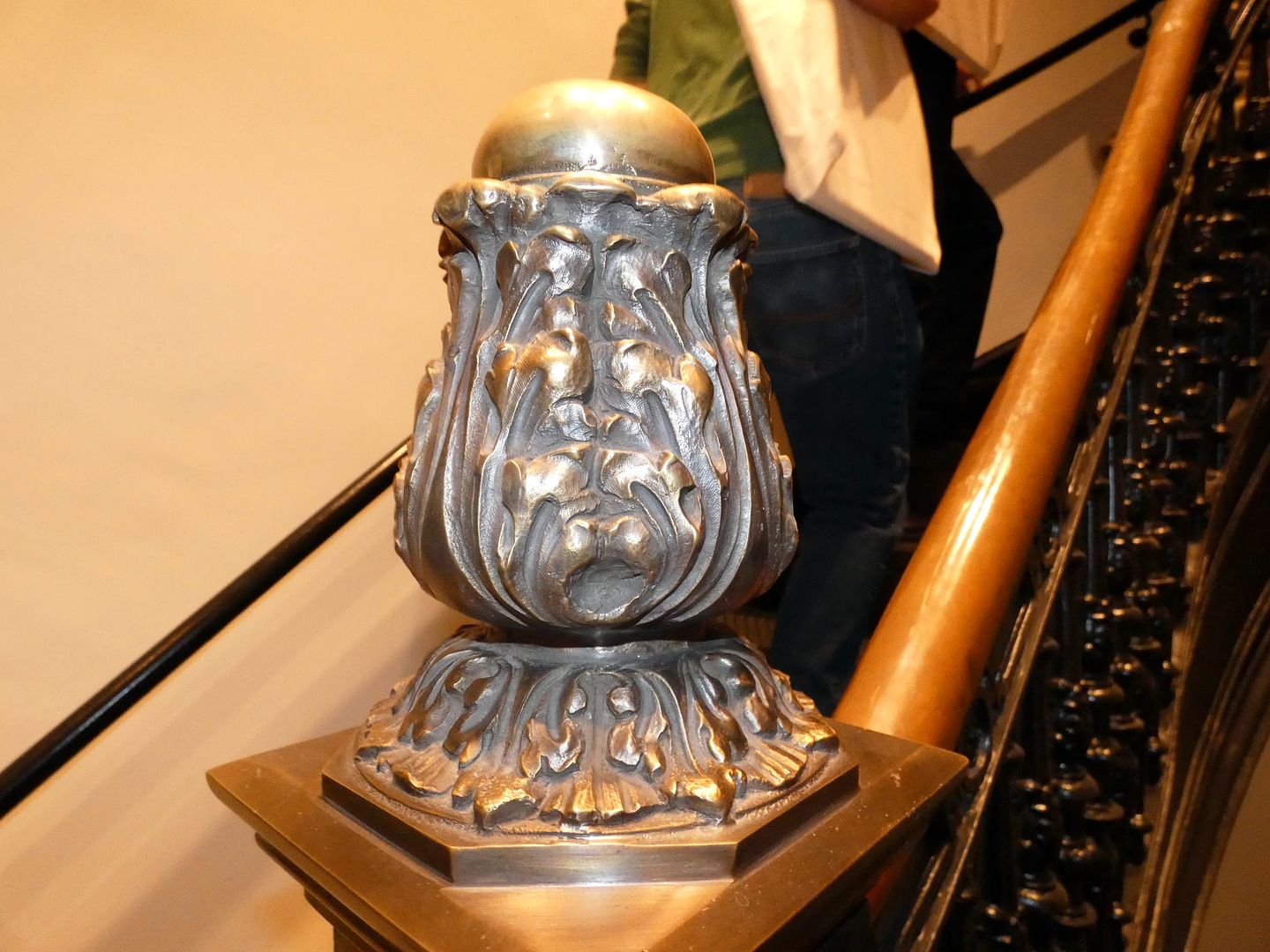

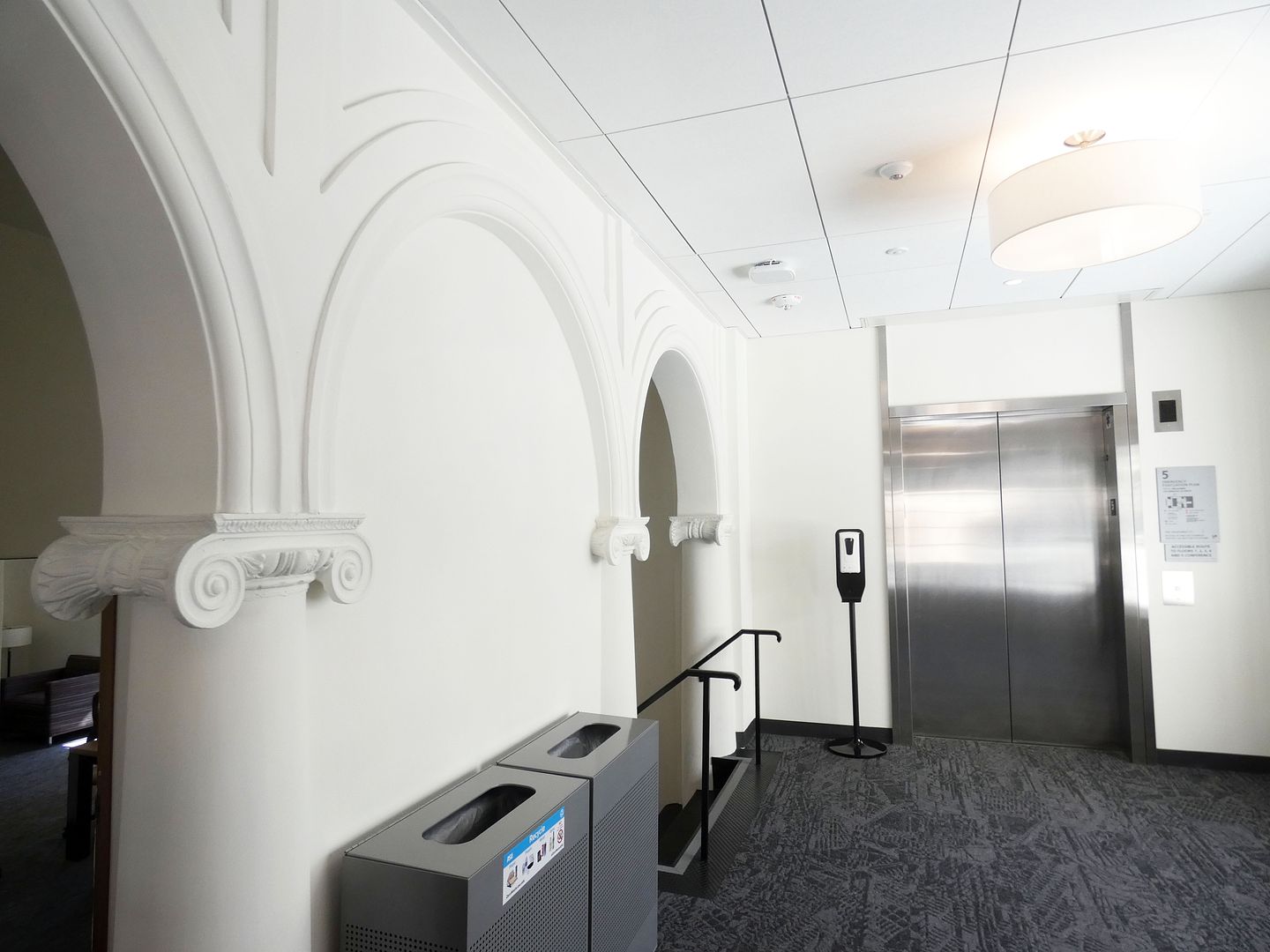

There's another preserved staircase—one that connects the third, fourth, and fifth floors.

In addition to restored finials, it also features a copper bannister that was banged up with a baseball bat during labor disputes that lasted 10 years (starting in 1967).

All the way up on the fifth floor, there are more vintage details beyond the Ionic columns...
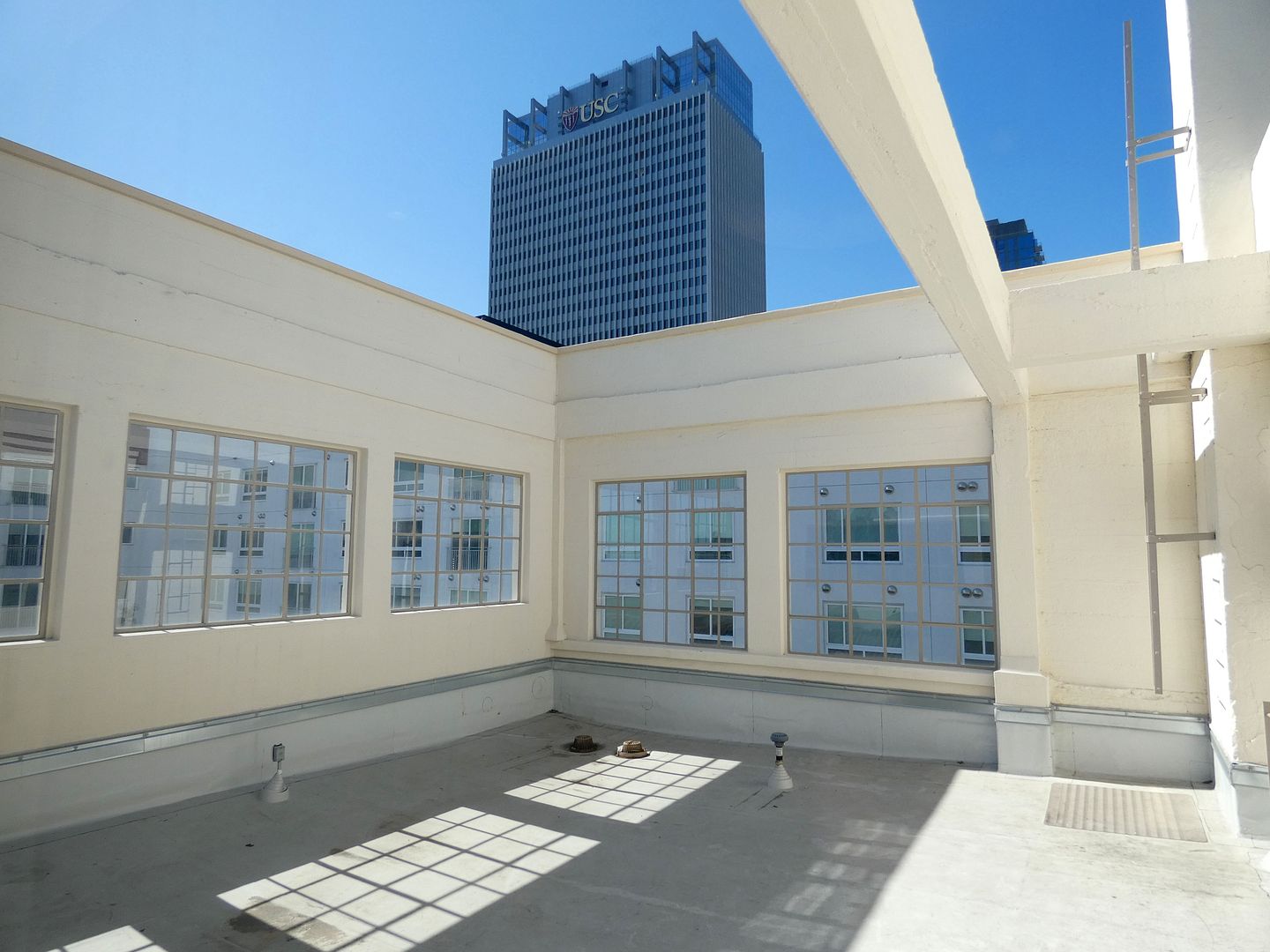

...although the view has changed significantly from the days when Hearst himself would walk these halls.
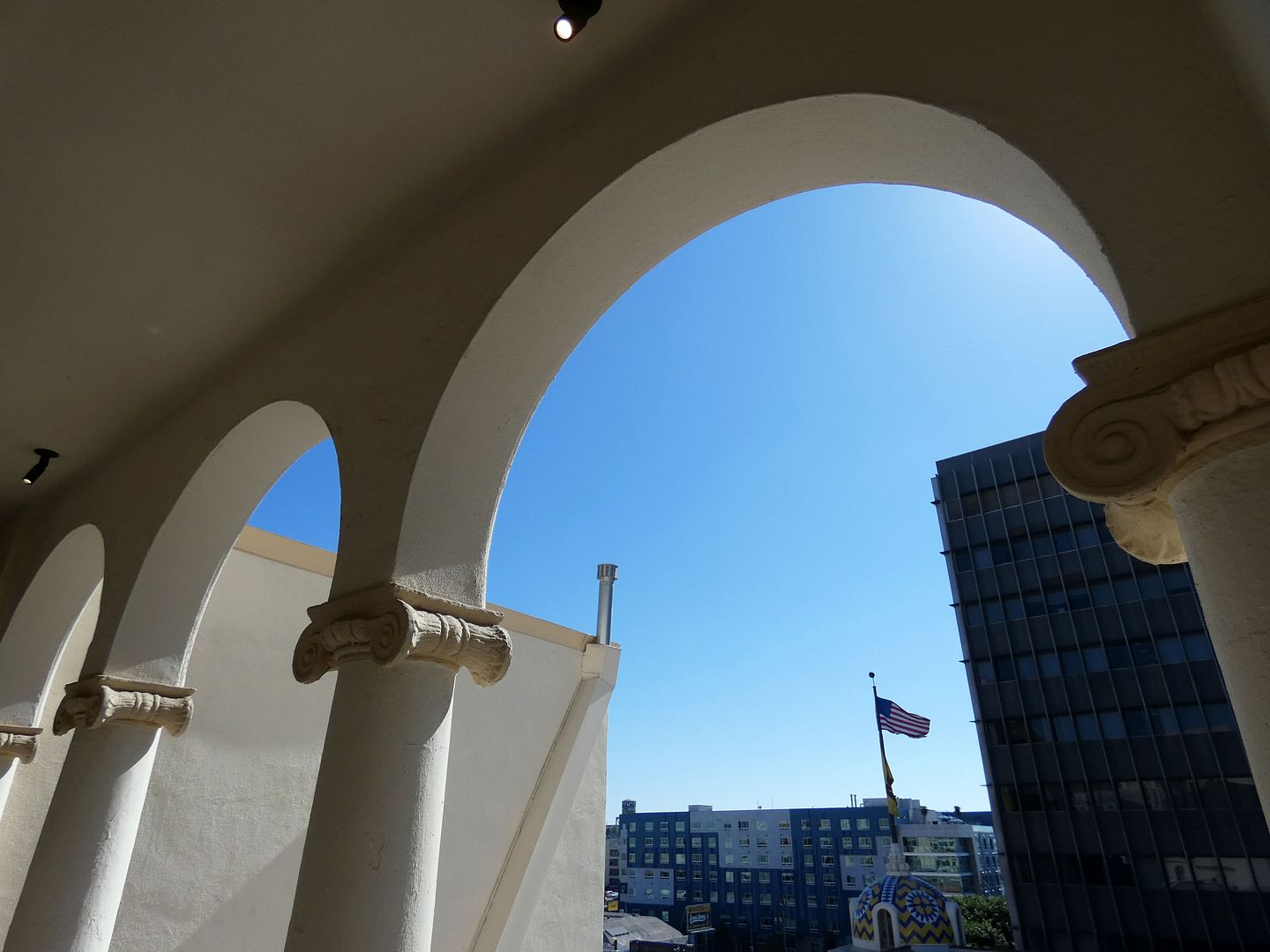
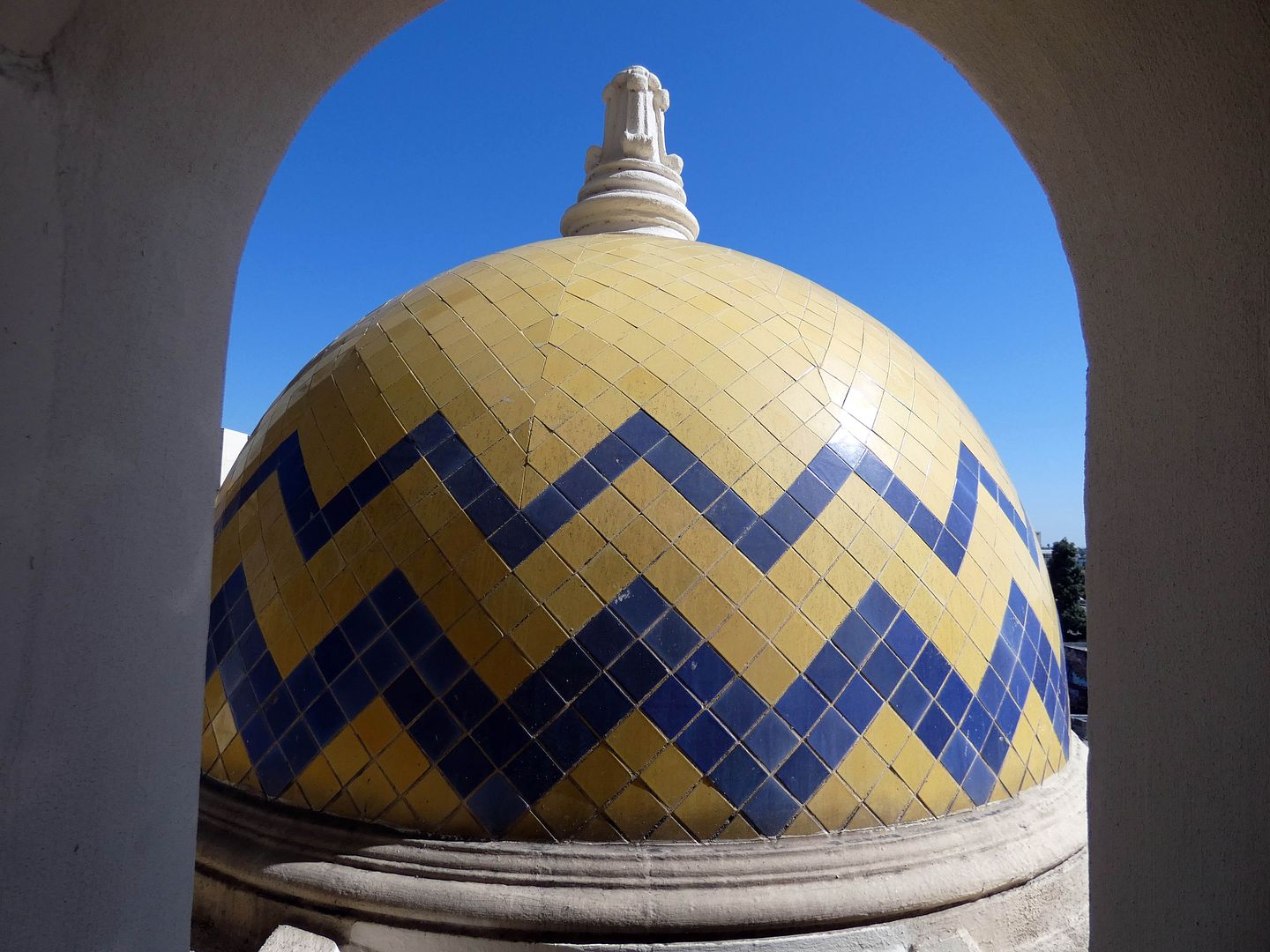
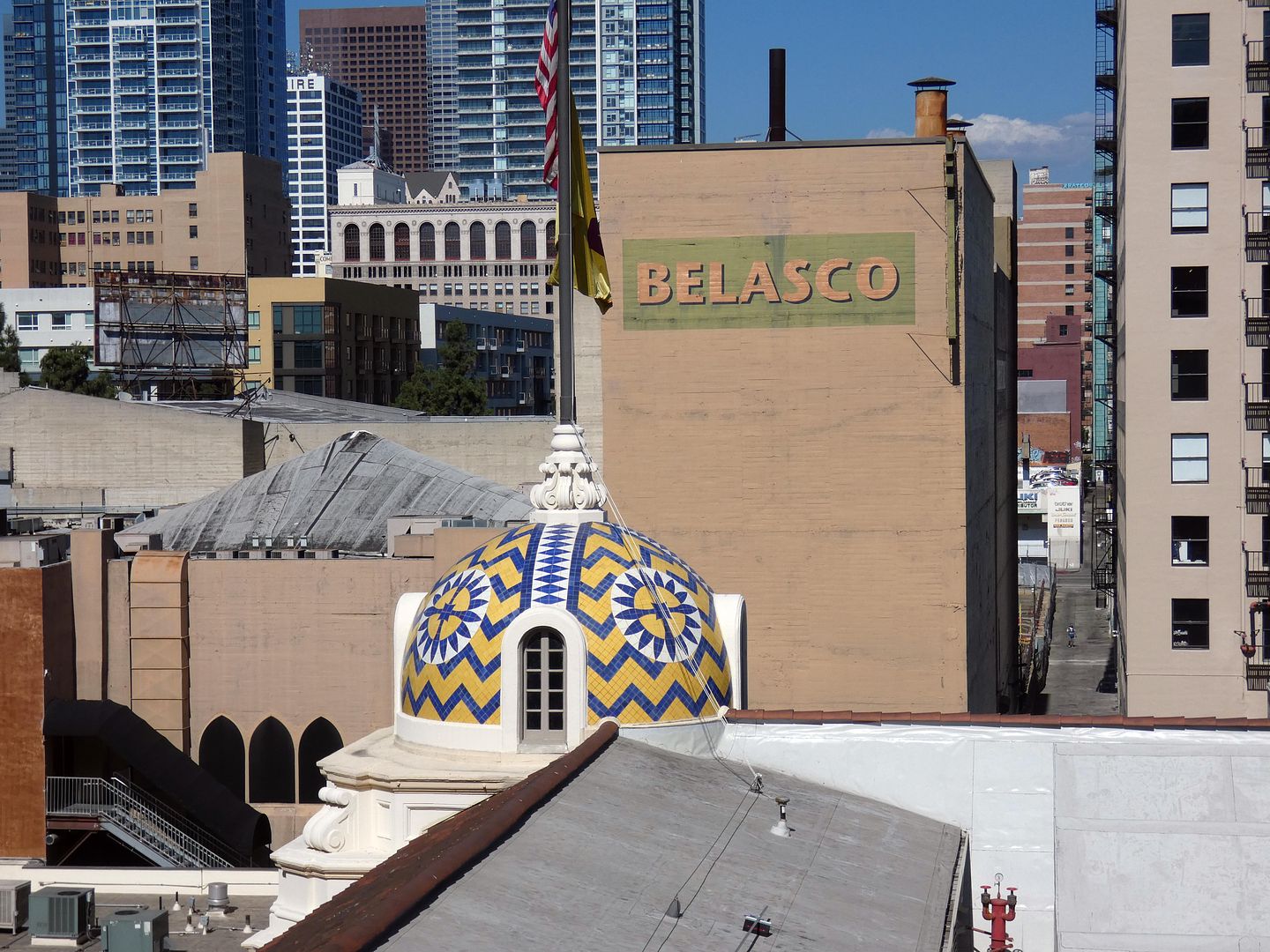
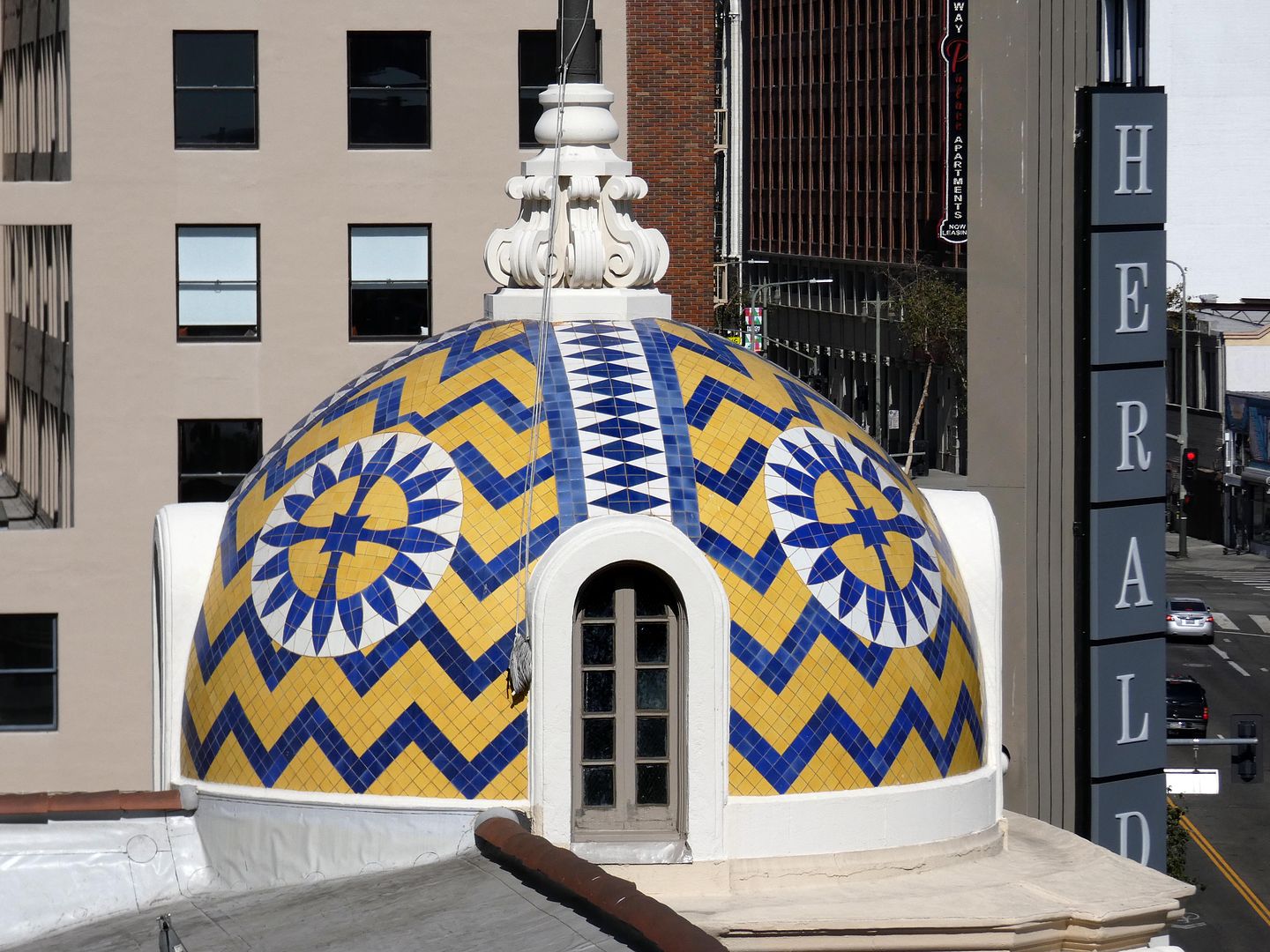
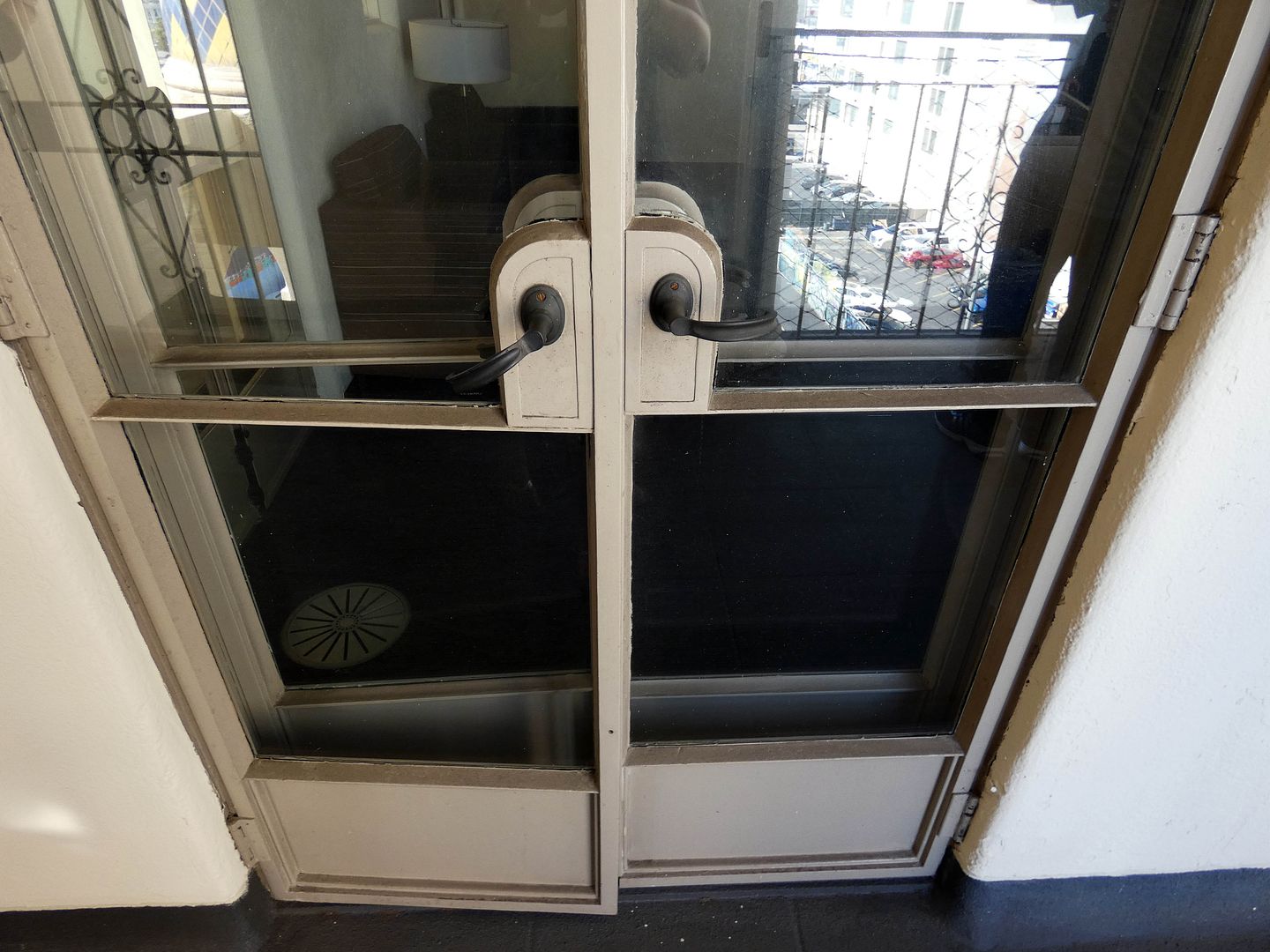
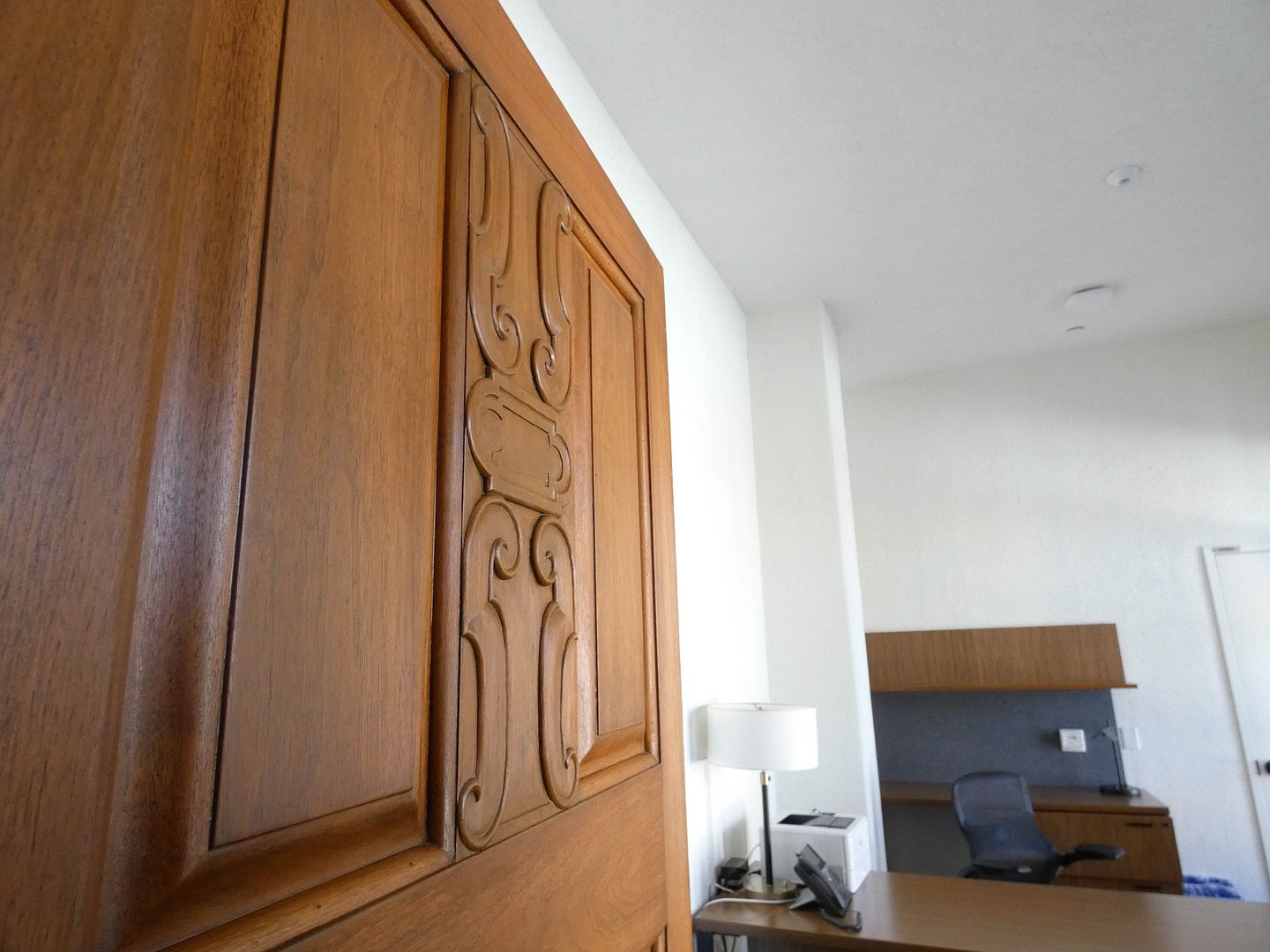

Not only are there tiled cupolas on each corner of the building's three-story wings (visible both from an open arcade on the fifth floor and from the street)...

...but there are even more domes in blue and yellow tile...

...although the blue, yellow, and white ones apparently contain bells.

We didn't hear them ring.

But we somehow felt the presence of Hearst when entering his former office, office 511, which was connected to an apartment he also stayed in.

Hearst died in 1951, and his descendants took over the business until its closure.
The Georgetown Company purchased the Herald Examiner Building in 2015 with the goal of converting it into a multi-use property—with residential and commercial elements, including restaurants.
Hearst Corporation remains a partner in the building, even with ASU as its main tenant.
It sure is nice to see the street-level windows opened up and all the peeling, discolored paint on the façade cleaned up.
Thanks very much to ASU for the tour. Members of the public can visit by attending events hosted by Zócalo Public Square.
Related Posts:

No comments:
Post a Comment